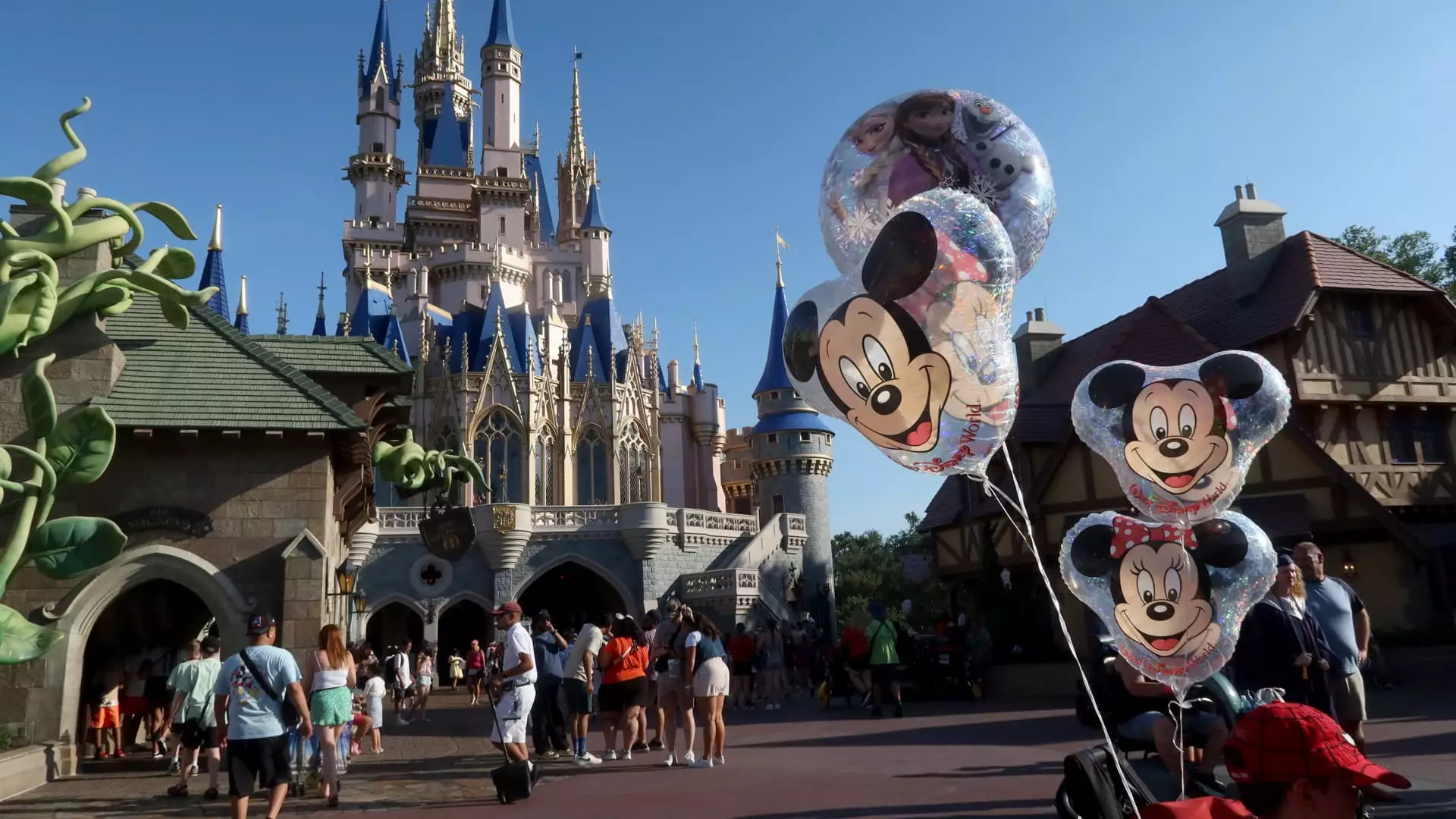As Disney prepares to release its fiscal first-quarter earnings report, anticipation is building among investors and analysts alike. Scheduled to be shared before the market opens on Wednesday, the financial results will provide critical insights into the current state of Disney’s two major business segments: streaming services and theme parks. Financial analysts polled by LSEG are projecting earnings per share to be approximately $1.45, alongside total revenue estimated at around $24.62 billion. These figures hint at a potentially robust performance, but they come with the weight of high expectations in a rapidly evolving market landscape.
Disney’s streaming segment is in the spotlight, particularly following a stellar year for box office performances and ongoing investments in theme park attractions. The last quarterly report impressed shareholders and resulted in a notable surge in stock prices, largely due to reported growth and profitability within the streaming domain. However, as the company heads toward 2025 with the impending leadership transition, the discourse surrounding subscriber growth is becoming increasingly critical. This is especially pertinent as Disney competes in the saturated streaming market, where rival platforms like Netflix continue to gain momentum. Recent reports indicate that Netflix achieved 300 million paid memberships, highlighting the challenge Disney faces in maintaining and expanding its subscriber base in a competitive environment.
While subscriber numbers are certainly significant, they represent just one facet of Disney’s overall strategy to engage viewers amid changing consumer behavior. Seeking to bolster its revenue streams, Disney has proactively introduced profit-driving initiatives, including ad-supported subscription tiers and measures to combat password sharing. These efforts align with a broader industry trend where streaming services are increasingly focusing on generating consistent revenue rather than solely prioritizing subscriber counts.
The effectiveness of these strategies will be scrutinized in light of investor sentiments and market conditions. As Disney navigates this critical phase, it must balance expansive growth ambitions with the operational realities of profitability. Stakeholders are keenly aware that the House of Mouse’s performance could significantly influence its future outlook in the face of burgeoning competition.
Another pivotal aspect of Disney’s narrative is the impending succession of CEO Bob Iger, who is anticipated to step down in early 2026. Wall Street is eager to glean insights regarding the selection process for his successor, as uncertainty in leadership can impact investor confidence significantly. This element adds a layer of complexity to Disney’s earnings report. How the company communicates its plans for succession and management continuity will be vital as stakeholders assess the potential for long-term growth under new leadership.
As Disney approaches its earnings report, investors and analysts will be keenly focused on the health of its streaming services and theme parks, while also keeping an eye on the crucial aspects of subscriber growth and leadership transition. With these key factors at play, the outcome of the earnings report will be closely monitored as a critical indicator of Disney’s strategic direction and financial health in an ever-changing market.

